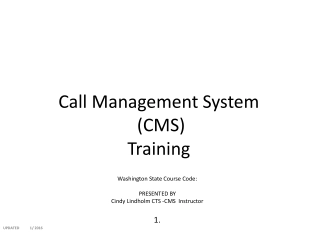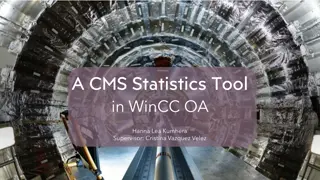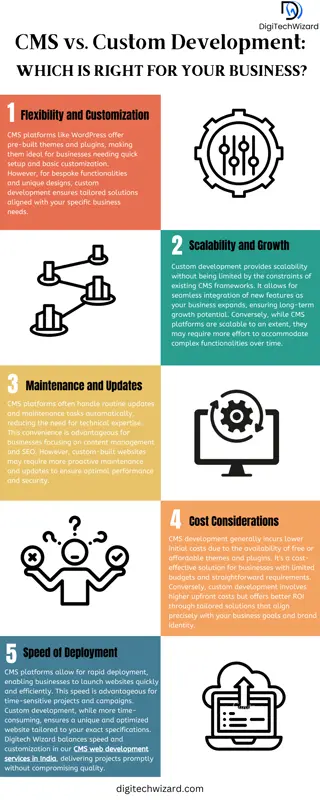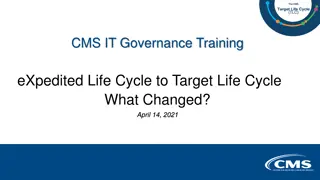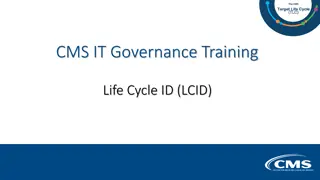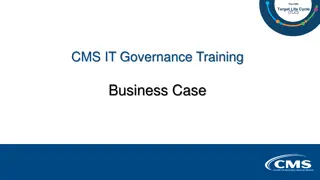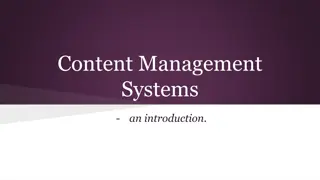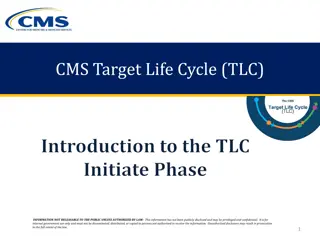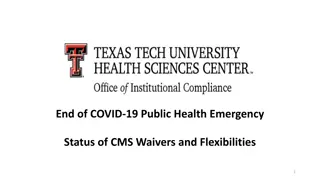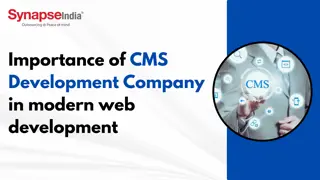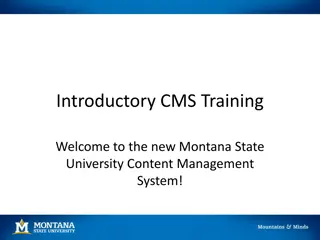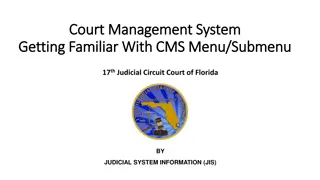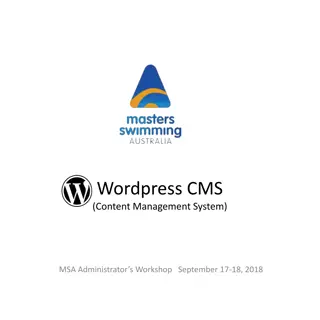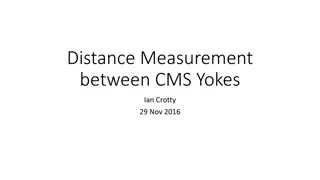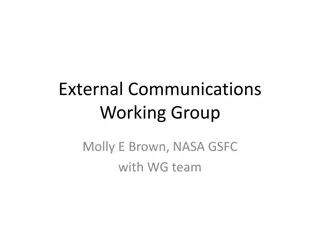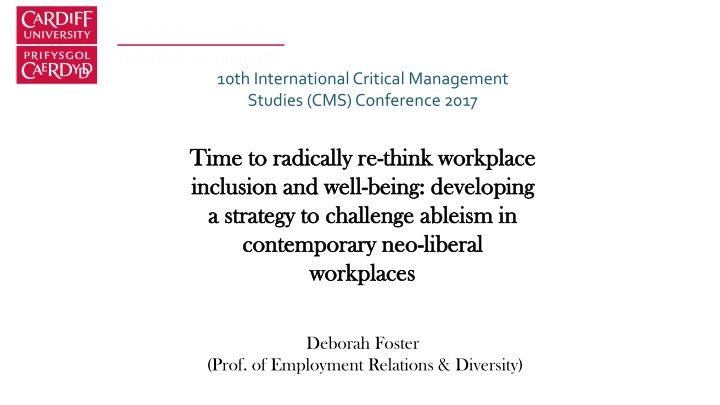
Rethinking Workplace Inclusion and Well-being: Challenging Ableism in Modern Workplaces
Explore the discourse on workplace well-being, inclusion, and ableism, as discussed at the 10th International Critical Management Studies Conference. Delve into the implications of ideal worker concepts, organizational fit, and the need for a radical rethink of work practices to promote genuine inclusivity. Discover the importance of adopting a social model of workplace well-being to counter oppressive value judgments in current health and well-being initiatives.
Download Presentation

Please find below an Image/Link to download the presentation.
The content on the website is provided AS IS for your information and personal use only. It may not be sold, licensed, or shared on other websites without obtaining consent from the author. If you encounter any issues during the download, it is possible that the publisher has removed the file from their server.
You are allowed to download the files provided on this website for personal or commercial use, subject to the condition that they are used lawfully. All files are the property of their respective owners.
The content on the website is provided AS IS for your information and personal use only. It may not be sold, licensed, or shared on other websites without obtaining consent from the author.
E N D
Presentation Transcript
10th International Critical Management Studies (CMS) Conference 2017 Time to radically re Time to radically re- -think workplace inclusion and well inclusion and well- -being: developing a strategy to challenge ableism in a strategy to challenge ableism in contemporary neo contemporary neo- -liberal workplaces workplaces think workplace being: developing liberal Deborah Foster (Prof. of Employment Relations & Diversity)
Central question: what would an inclusive model of workplace well-being look like? Intention is to take forward debates in: 1. Foster and Wass (2013) Disability in the labour market: an exploration of concepts of the ideal worker and organisational fit that disadvantage employees with impairments . Sociology 47(4): 705 21. 2. Foster, D (2017, early view) The Health and Well-being at work agenda: good news for (disabled) workers or just a capital idea? Work, Employment & Society.
Employers & the state are interested in defining a generic ideal worker & one best way of working. Scientific work studies and job design standardise work roles. Workers become abstracted and disembodied fromjobs. Analysed taken-for-granted organisational behaviour using ET scripts, highlighting ableist norms and assumptions. Concluded: the organisation of work has become increasingly complex. Standardised performance expectations make it difficult for disabled people to achieve organisational fit . Concepts of the ideal worker and organisational fit have disadvantaged employees with impairments (Foster & Wass, 2013)
A radical re-think of work that goes beyond inventing an abstract job to fit an ideal employee, or adapting this ideal to accommodate a person with an impairment. A strategy to challenge embedded ableist ways of working in areas of job design, recruitment, career progression/advancement, retention and retirement. Workplace well-being agendas need to be reclaimed from management consultants and HR and collectivised, using co-production to effectively integrate disabled people. What is needed?
H&WB terminology uncritically embedded in HRM and academic vocabularies. Employer H&WB initiatives focus on individual employees and improving employee resilience , rather than exploring workplace problems. UK Labour Force Surveys show that work-related stress, depression and anxiety are a prime cause of work-related ill- health. A social model of workplace WB is needed, which focuses on social and collective barriers, to counter employer initiatives that medicalize and individualise. Value-judgements in current H&WB programmes are oppressive: reinforcing normalcy & ableism; judge worker life- styles; encourage ideal worker expectations around a specific view of the body and of mental and emotional well-being. Employer discourses on workplace health and well-being (H&WB) dominate
In an era of longer hours and shorter contracts, of tighter margins and frequent organizational change, stress can undermine both the mental health and performance of employees. A culture of resilience in the workplace, however, offers the potential to support psychological wellbeing and improve the performance of both people and organizations . Academic books on workplace resilience
Resilience = a sense of recovery and rebounding despite adversity or change (Lewis et al., 2011: 3). BUT, resilience promotes the idea that optimism is an essential and learned behaviour (Cotton, 2012: 7). This logic appeals to governments pursuing austerity and seeking to justify reductions in welfare to the undeserving poor . Joseph (2013: 40 43) argues: resilience represents a form of neo-liberal governmentality. This takes the form of prioritizing the management and adaptability of the self, subjectivity and individual responsibility, thus facilitating governmentality from a distance . Resilience is a neo-liberal discourse (see Foster, 2017)
In 2014/15, stress accounted for 35 per cent of all work- related ill-health cases and 43 per cent of all working days lost due to ill-health in the UK (LFS reported in HSE, 2015 2 6). Key reported causes of work-related stress are increased workloads (tight deadlines, too much pressure/responsibility), lack of managerial support; violence and role uncertainty (LFS 2009/10 2011/12, reported in HSE, 2015: 7). Types of work & stress: in 2015, the UK HSE found professional occupations (often associated with discretion and autonomy) had significantly higher rates of work related stress than the rate for all occupations (HSE, 2015: 5). Workplace stress: the contemporary epidemic .
The UK TUC: HR-led H&WB initiatives are increasingly being used as a means of bypassing union statutory workplace H&S representatives. Trade union perspectives on H&WB at work programmes TUC describe H&WB programmes as: a convenient label for almost any health related initiative (TUC, 2013: 2). Some unions have produced workplace wellbeing toolkits to highlight healthy working practices: flexible working, work life balance, participation and consultation, workplace adjustments. Reframing well-being debates in this way is important, providing alternatives to austerity and lean management, ideal worker discourses.
It would question definitions of H&WB that refer to a norm of physical, mental and emotional health: What might an inclusive model of H&WB look like? if we rethink our assumptions about the universality of the concept of the norm, what we might arrive at is the concept that preceded it: that of the ideal (Davis, 2006: 4) It would normalise difference rather than expect assimilation It would question the current assumption that if a person is not suitable for a job because of an impairment it can be adjusted and instead ask: how do we adjust a role to suit the talents of the person?
Rejects a narrow individualized and medicalized account of health and disability. Problematizes impairments and their effects within a social, collective and political context Offers a political critique of disabling social relationships in work that arise directly from socio- historic material conditions embedded in capitalism The advantages of using a critical disability studies lens
In countries where wage subsidies dominate as a way of integrating disabled people into the labour market, how can this proposed agenda work? Questions to the audience! What could the role of HR and trade unions be?

